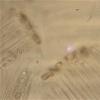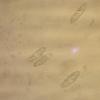
29-12-2025 08:30
Hello.A tiny ascomycete sprouting under Juniperus

29-12-2025 10:15
Hulda Caroline HolteHello, I found and collected this propoloid ascom

29-12-2025 09:38
Oskari VirtanenHi,could anyone help me identify this, I suspect P

28-12-2025 12:08
Margot en Geert VullingsThis possible Karstenia was found on the bark of d

21-12-2025 21:32
Pol DebaenstHello, Garden, Burgweg 19, Veurne, BelgiumOn 10/1

26-12-2025 21:19
Arnold BüschlenPithyella chalaudii Priou. Ist als Bryoparasit in

21-12-2025 09:32
Hello.A tiny ascomycete found embedded in wood in

18-12-2025 21:17
Pol DebaenstThe identification took me to Byssonectria deformi
Rutstroemia (?) on Corylus avellana
Edvin Johannesen,
23-11-2020 15:11

Dear all,
This one was sent to me as exciccate. One of the photos is from fresh material. The rest are from dried material. The apothecia have a hairy stem and are also somewhat hairy along the rim of the apos. The interior appears gelatinized when re-wetted. Growing on a blackened twig of Corylus avellana.
Spores hyaline, ellipsoid, unicellular, measuring 11-13 x 4-5 microns. Two large and many small guttules in water. Two "vaculoes" filling the entire spores in KOH, making them appear 1-septate. Paraphyses filiform, filled with small "granules" in water, ca. 2 mcr across, not enlarged at the tips. Asci measuring 90-100 x 8-10 mcr in KOH, slightly larger in water (up to 110 x 12). Ascus apex IKI+. Excipulum I think should be described as textura intricata or in places perhaps t. oblita.
Single spore photo in KOH, IKI+ photo in Lugol, the rest in water.
I guess this is a Rutstroemia, but which? Or am I in the wrong genus?
Hans-Otto Baral,
23-11-2020 16:48

Re : Rutstroemia (?) on Corylus avellana
I agree with Rutstroemia which has t. prismatica or t. oblita. The scale in your photos suggests much large spores, or has it a factor far below 1?
Edvin Johannesen,
23-11-2020 16:58

Re : Rutstroemia (?) on Corylus avellana
The measures I have was in KOH. You are absolutely right, the spores are considerably larger in water (scale is 1), I'd say 15-17 x 5-6 mcr. Is that still too small for R. alni? Or does R. alni only occur on Alnus? (I have assumed that the collector is right about Corylus, he is very experienced).
Hans-Otto Baral,
23-11-2020 17:02

Re : Rutstroemia (?) on Corylus avellana
R. alni is a possibility, but perhaps more probable is R. alnobetulae which is gelatinized in the excipulum
Edvin Johannesen,
23-11-2020 17:36

Re : Rutstroemia (?) on Corylus avellana
Thanks! I was not aware of this species.
According to Dougoud (attached), R. alnobetulae:
"Differs from the other lignicolous species of Rutstroemia by its longer ascospores, (21.5–) 22.5–26 (–28.2) × 5.6–6.5 ?m and the amyloid reaction of the paraphyses, and more particularly from R. alni by its narrower ascospores and its strict habitat on dead branches of Alnus alnobetula."
The paraphyses are not amyloid in the current specimen.
Does it appear to you that the ascospores inside the asci in my photos are immature (and thus smaller)? Do you know if R. alni can grow on Corylus?
Hans-Otto Baral,
23-11-2020 17:54

Re : Rutstroemia (?) on Corylus avellana
Yes, you are right, I think there exist collections on other substrates, but I cannot see them in my folders, maybe there are no scans so far. But R. alni has broader spores, 7-8 µm
Edvin Johannesen,
23-11-2020 17:57

Re : Rutstroemia (?) on Corylus avellana
So, could it simply be R. firma?
Hans-Otto Baral,
23-11-2020 20:37

Re : Rutstroemia (?) on Corylus avellana
You need to make a section showing the ectal excipulum. That must be thin-walled, not strongly gelatinized. And R. firma might be confined to Fagaceae.
Edvin Johannesen,
23-11-2020 20:48

Re : Rutstroemia (?) on Corylus avellana
OK, I will try to make a nice section.
Edvin Johannesen,
23-11-2020 23:04

Re : Rutstroemia (?) on Corylus avellana
I think it is difficult to decide whether the excipulum is gelatinized, but both in water and KOH the hyphal structure seems "blurred", which I interpret to indicate as gelatinized. I also noticed yellow granules at the tips of the paraphyses (photo). The mature spores confirm the size. Not sure if this helps.
Hans-Otto Baral,
24-11-2020 10:19

Re : Rutstroemia (?) on Corylus avellana
R. alni is 7-8 µm wide even in dead spores.
I have 8x Alnus and 1x carpinus in my collection database, and 4x Alnus in the literature database.
Corylus is easy from wood anatomy in radial section (ladder-perforation).
Edvin Johannesen,
24-11-2020 10:44

Re : Rutstroemia (?) on Corylus avellana
OK. I guess I should check the host. Cheers.
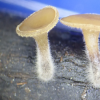
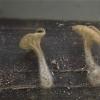
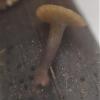
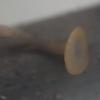
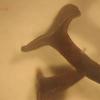
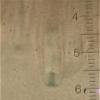
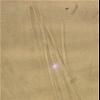
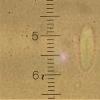
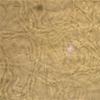
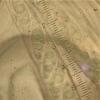
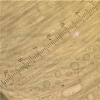
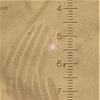
 Rutstroemia-alnobetulae-n.-sp.-0001.pdf
Rutstroemia-alnobetulae-n.-sp.-0001.pdf